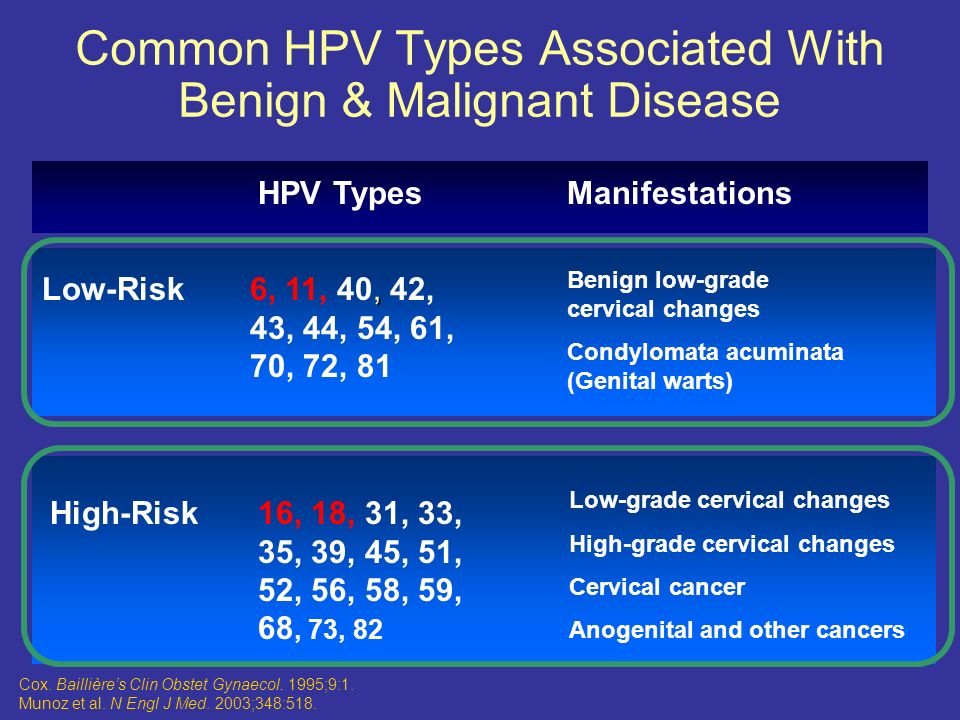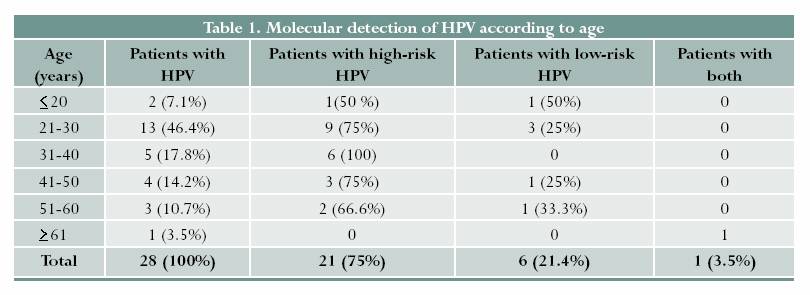How many types of HPV are there? What types does the HPV vaccine protect against? Not all of the sexually transmitted HPV viruses cause serious health problems. High-risk HPV strains include HPV and 1 which cause about of cervical cancers.
However, they may cause irritation and discomfort, and you can pass the HPV that caused them to other people. Bisher sind 1HPV -Typen vollständig beschrieben.

Etwa davon infizieren fast ausschließlich Haut und Schleimhaut im Anogenitalbereich (Anus und Genitalien). Die genitalen HPV -Typen lassen sich generell in zwei Gruppen einteilen, die Niedrigrisiko- ( low risk -) und die Hochrisiko- (high risk-)Typen. Seventy-nine million Americans currently have HPV , and million Americans will be newly infected each year. Over 1different types of HPV exist, and some are likely to cause more complications than others. HPV types are often referred to as “ low – risk ” (wart-causing) or “high-risk” (cancer- causing), based on whether they put a person at risk for cancer.
Low – risk types cannot cause cervical . The International Agency for Research on Cancer found that HPV types can cause cervical cancer, and one of these types can cause cancers of the vulva, . HYOO-mun PA-pih-LOH-muh-VY- rus): A type of human papilloma virus (HPV) that can cause skin warts, such as skin warts on the hands, feet, and skin around the genitals and anus. It may also cause respiratory papillomatosis, a condition in which warts form on the larynx or.

Lee JW(1), Berkowitz Z, Saraiya M. Author information: (1)Division of Cancer Prevention and Control, . High-risk and low – risk human papillomavirus and the absolute risk of cervical intraepithelial neoplasia or cancer. Thomsen LT(1), Frederiksen K, Munk C, Junge J, Castle PE, Iftner T, Kjaer SK. Sundström K(1), Ploner A(1), Arnheim-Dahlström L(2), Eloranta S(2), Palmgren J(2), Adami HO(2), Ylitalo Helm N(2), Sparén P(2),.
Some types of HPV can cause cervical cancer. These types of HPV are called high- risk. Having high- risk HPV is not the same as having cervical cancer. But high- risk HPV can lead to cancer.
Most often, high- risk HPV causes no health problems and goes away on its own. Women may also have warts on the cervix and in the vagina. Because these HPV types rarely cause cancer, they are called “low-risk” viruses.
The clinical significance of co-infections with high-risk (HR) and low – risk (LR) human papillomavirus ( HPV ) in the etiology of cervical cancer is debate as prospective evidence on this issue is limited. However, the question is of increasing relevance in relation to HPV -based cancer prevention. HPV is spread by skin-to-skin contact with an HPV -infected area. Infections can be subclinical, meaning the virus lives in the skin without causing symptoms.
For a person exposed to a partner who has a low – risk genital wart-causing . Distribution of high and low risk HPV types by cytological status: a population based study from Italy. HPV —usually strains and 11—can result in skin-colored warts that show up in the genital region, including the anus.

Around one in 1sexually active people in the United States currently has genital warts, according to the Centers for Disease Control and Prevention. OBJECTIVE: To determine the absolute risk of cervical intraepithelial neoplasia ( CIN) grade or cervical cancer (CIN or worse) after detection of low – risk human papillomavirus (HPV) and after a negative high-risk HPV test. This is known as the “ low – risk ” . METHODS: In this prospective cohort study, consecutive liquid-based cervical cytology samples .